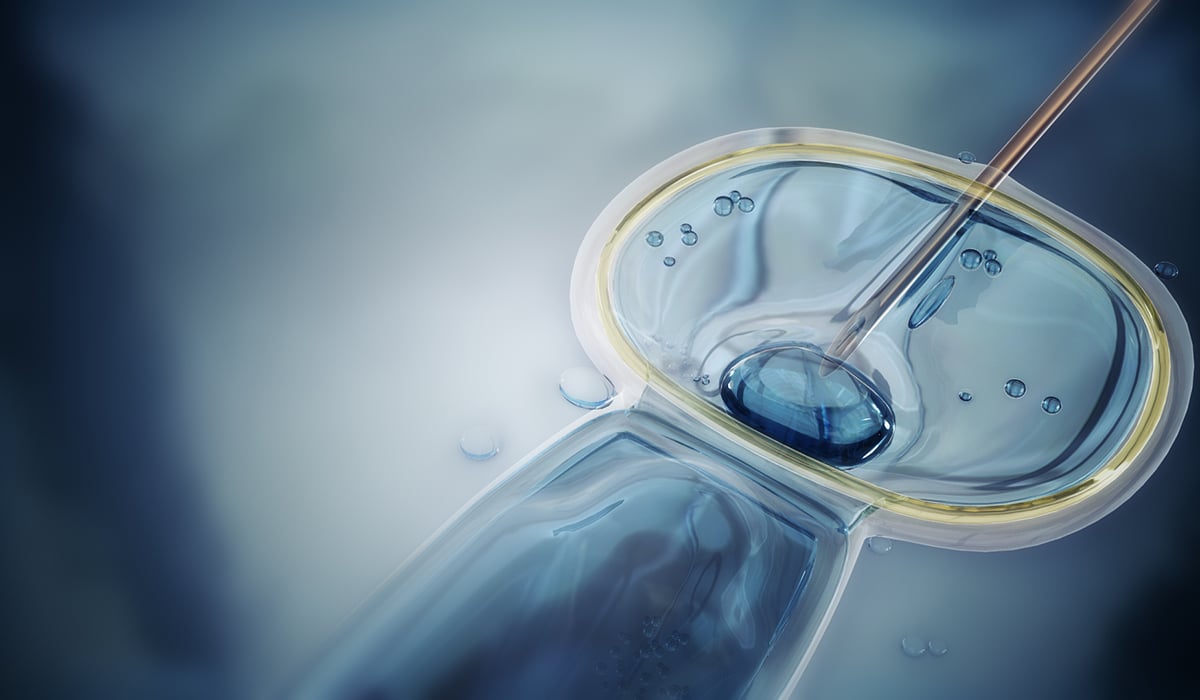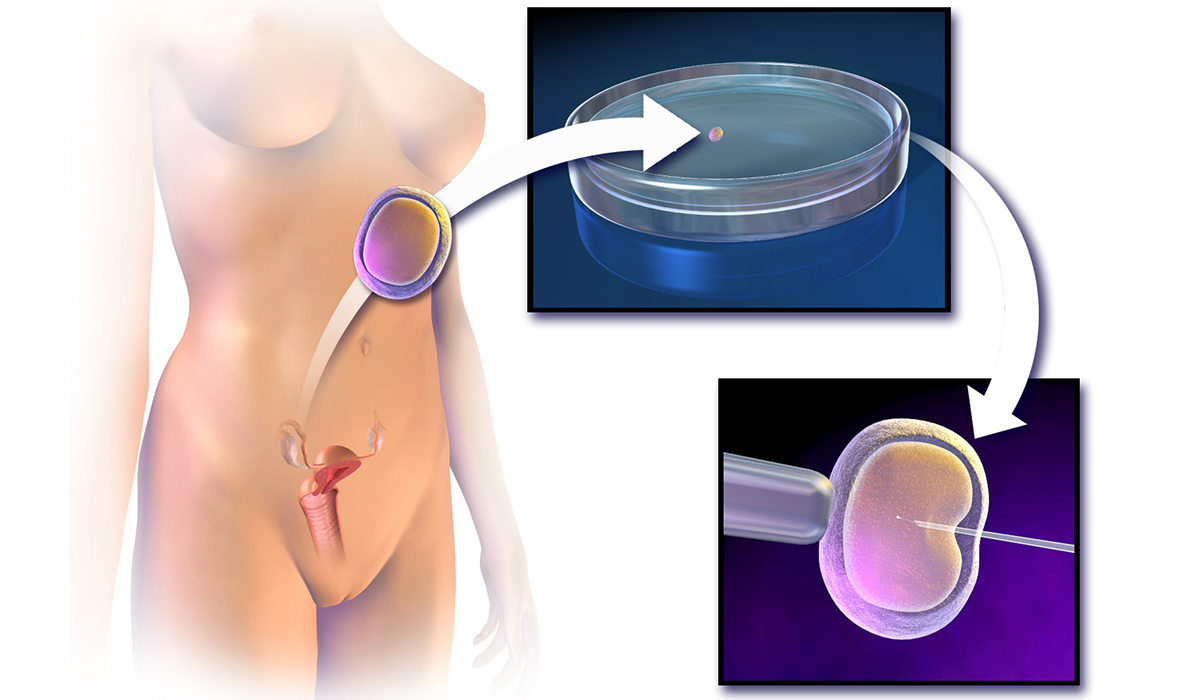Intracytoplasmic Sperm Injection (ICSI) – Dispelling the Myth
An intracytoplasmic sperm injection (ICSI) is one of the relatively new IVF programs. Because of the age of this fertilization program, there are many wild speculations among potential patients as to who an ICSI is for and why it costs more than a traditional IVF. Questions like “What is an intracytoplasmic sperm injection, really?” and “What is the actual ICSI success rate?” seem to arise with the increasing frequency. So, to lay to rest all the myths concerning the ICSI, we have decided to investigate how this procedure works and who could be the ideal patient for an ICSI fertility program. In addition, we will look into statistics that demonstrate the number of clinical pregnancies that resulted from an intracytoplasmic sperm injection (ICSI).

Intracytoplasmic Sperm Injection Definition
An intracytoplasmic sperm injection (ICSI) is a fertilization procedure that consists of injecting one live sperm into an egg. Unlike other IVF programs, where eggs and sperm are mixed together, an ICSI is really economical in terms of the amount of genetic material. Everything one needs for this procedure to run smoothly is one active sperm and one high-quality egg. Of course, special equipment like a fine glass needle and experienced embryologists are important factors that impact the success rate of an ICSI too.
ICSI Procedure
If to look at the history of an intracytoplasmic sperm injection (ICSI), one can learn that 1992 is the year when the first child was born by ICSI. This child should already be in his/her late 20s. It means that even though an intracytoplasmic sperm injection (ICSI) is a relatively new procedure, it is, in fact, an effective infertility treatment. A typical ICSI procedure involves the following steps.
1. Preparation for an ICSI Cycle

For a female partner: Fertility medications are used to stimulate ovaries so that a few eggs develop. Once eggs are detected by ultrasound, they need to be retrieved surgically. The number of eggs can vary depending on numerous factors, from a woman’s age to her diagnosis. After being retrieved, eggs are placed in an incubator.
For a male partner: Semen samples are collected after 3 to 5 days of sexual restraint. Depending on a man’s diagnosis, semen can be collected via masturbation (the most common way) on a day when an egg retrieval operation is performed on a female partner or prior to the day. After that, semen is analyzed to isolate high-quality sperm and remove unwanted biological material from the sample (if needed).
2. Insemination with ICSI

This step implies injecting a high quality (morphologically suitable) sperm into a high-quality egg in a culture dish.
3. Post ICSI Phase
After (typically) 5 days following a successful ICSI procedure, embryos are transferred into a maternal uterus.
As you can see from the list above, steps 1 and 3 looks similar to what you expect when you go for a traditional IVF procedure. However, step 2 is what differentiates an intracytoplasmic sperm injection (ICSI) from other in vitro fertilization programs. In contrast to bringing together an egg and washed sperm for a couple of hours, an ICSI implies the direct injection of one sperm into one egg.
Needless to say, all the steps mentioned above are performed after a solid identification check of the partners involved. Confirmation documents are a big part of the ICSI too.
Who Can Benefit from An Intracytoplasmic Sperm Injection (ICSI)

Who is an ideal patient for an intracytoplasmic sperm injection (ICSI)? This is a common question among prospective patients who are considering IVF. Truth be told, the notion of “ideal” is overrated and hardly applicable to infertility treatment. Yes, there are certain factors like pregnancy weight that could increase the chances for successful fertilization. But to stay realistic about ICSI, one has to understand that all medical treatment methods have limitations.
Why Choose Intracytoplasmic Sperm Injection?
So, originally, an intracytoplasmic sperm injection (ICSI) was developed as one of the methods to treat male infertility. However, there are other cases when this procedure is effective.

In short, the list of five reasons to go for an intracytoplasmic sperm injection (ICSI) includes the following points:
- A male partner has an oligospermia diagnosis. In layman’s terms, it means that a man has a limited amount of active sperm. By “limited”, we mean the amount that is 15 million sperm per milliliter of semen or fewer.
- A male partner has a high amount (more than 96%) of sperm that is of poor or abnormal morphology. An oval head and a long tail are two main features that characterize normal sperm. If there are any changes in these two features, then sperm can be considered abnormal.
- A male partner experience problems with ejaculation. For instance, ejaculation can be delayed, painful, or a patient may have no ejaculation. In most of these cases, doctors can collect semen surgically either from the testicles or epididymis.
- Frozen sperm is a solution to treat infertility and if there are fears about the quality of sperm. From a technical point of view, there are no time limits when it comes to frozen sperm. However, if the quality of this sperm is low, then an ICSI offers higher chances for successful fertilization.
- You have had traditional IVF procedures in the past and experienced difficulties with them.
From the list above, you can see that 4 out of 5 reasons mentioned are directly connected with different types of male infertility. At the same time, an intracytoplasmic sperm injection (ICSI) can be useful in case you have tried IVF before and had little or no success with in vitro fertilization program.
Should I Go for It?
Sometimes, patients insist on having an intracytoplasmic sperm injection (ICSI) already during the first treatment cycle. The most common reason for this decision is to increase fertilization chances. Affordable and logical as it may seem, this step is not always necessary. To learn whether you as a couple would benefit from an intracytoplasmic sperm injection (ICSI), consult your doctor and only they make the final decision.

Intracytoplasmic Sperm Injection Success Rate
Now that you know the intracytoplasmic sperm injection definition and when this procedure is a fit, it is high time to learn about the success rate of ICSI. Yes, it is always nice to see scientific proof that this procedure can lead to a successful clinical pregnancy. However, it is also important to realize all the possible risks connected with the procedure. In other words, even though an intracytoplasmic sperm injection is an elaborate medical procedure, it is not a 100% guarantee that fertilization will take place.
After the proof of its success back in 1992 with the first baby born by ICSI, the injection of sperm in an egg revolutionized the male infertility treatment. Already in the early 1990s, the success rate of an ICSI was considerably high.
As you can find in this study from 1993 on fertilization and implantation rates of intracytoplasmic sperm injection, 35% of clinical pregnancies take place per cycle. The same research shows that more than 80% of couples suffering from severe male infertility had embryos transferred. These numbers speak for themselves, don’t they?
ICSI Nowadays
Since the 1990s, when an intracytoplasmic sperm injection was first put into practice, this infertility treatment has evolved radically. Now, you can choose between traditional IVF, traditional ICSI, and IVF/ICSI split. The split option consists in combining a traditional IVF (when sperm and an egg and mixed in a dish and left for a couple of hours) and an ICSI (with one sperm injected into an egg). As the study from 2002 demonstrates, an ICSI helped to treat infertility in 12 of 110 cycles (10.9%) for couples that tried IVF with no success.
The authors of the study emphasized the idea that if applying ICSI-IVF insemination split, one can guarantee the higher success rate resulting in more fertilized eggs. There are certain medical restrictions for the IVF/ICSI. In some fertilization centers, a number of retrieved eggs can be a determining factor for performing IVF/ICSI split. That is why it always makes sense to consult your doctor about all the options available and pick the one that caters to your needs to the fullest.
Summing It Up
Everything we learned about an intracytoplasmic sperm injection leads to the following points.
- ICSI is an infertility treatment;
- It is economical because it requires only one sperm and one egg;
- The ICSI treatment is a great way to treat male infertility;
- ICSI success rate is higher than one of a traditional IVF;
- Experts often use it with IVF (IVF/ICSI split) to increase fertilization chances.